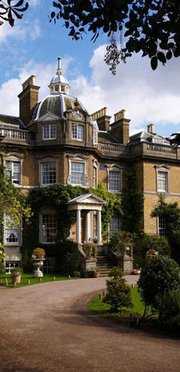Hampton Court House
 | |
| Motto | Fortiter In Re Suaviter In Modo |
|---|---|
| Established | 2001 |
| Type | Independent day school |
| Headmaster | Guy Holloway |
| Founder | Eliana Houstoun-Boswall |
| Location |
East Molesey London Borough of Richmond upon Thames KT8 9BS England |
| Students | 200 |
| Gender | Coeducational |
| Ages | 3–16 |
| Colours |
Pink & Black |
| Website | hamptoncourthouse.co.uk |
Hampton Court House is an 18th Century building on the edge of Bushy Park, the second largest of London’s Royal Parks located in the London Borough of Richmond upon Thames. George Montagu Dunk, the 2nd Earl of Halifax, Ranger of Bushy Park and Chief Steward of the Honor and Manor of Hampton Court built the house in 1757.
Hampton Court House today houses an independent school popularly known as HCH. The historical building also lends itself for special events such as weddings and the filming of movies.
The School
Hampton Court House School was founded by Lady Eliana Houston-Boswall after splitting from her partner Sir Alford Houstoun-Boswall in 1996, together they had previously founded The Harrodian School in 1993. Hampton Court House School opened its doors in September 2001 after extensive refurbishments[1] were made to the historic 18th century building.
The Events
Hampton Court House lends itself to a range of events including weddings, filming, photography, corporate entertainment, civil ceremonies and theatre events.
The Building
The Grade II* listed building fronts Hampton Court Green and backs on to Bushy Park. It was built around 1757 by George Montagu Dunk, 2nd Earl of Halifax for his mistress Mrs Anna Maria Donaldson,[2] an accomplished singer of the day and was designed by the renowned architect of the time Thomas Wright. In 1771 after the death of the Earl it was let to the Earl of Suffolk then to the renowned 4th Earl of Sandwich; Charles Bingham; Admiral Lord Keith; and the 3rd Earl of Kelly. In 1883 Thomas Twining of the Twinings family of tea and coffee merchants bought the house for his daughter and her husband Auguste de Wette.[3] In 1971 the Teddington Theatre Club converted the picture gallery into a modern theatre.[4]
References
External links
| Wikimedia Commons has media related to Hampton Court House School. |
| |||||||||||||||||